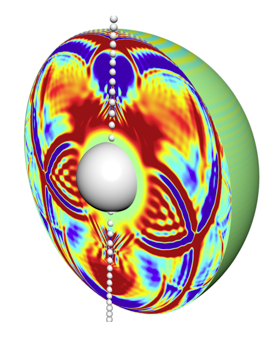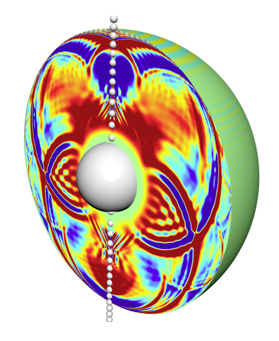Star chime could reveal small black holes
In theory, black holes come in all sizes, not just the star- and galaxy-scale objects that astronomers have already seen. In particular, smaller “primordial” black holes might have formed from density fluctuations in the first seconds after the big bang. In addition to providing a window into the universe in its earliest moments, these remnants could be the cold dark matter that makes up about a quarter of its present mass.
Previous observations rule out abundant black holes smaller than or larger than times the mass of the sun, but intermediate sizes could still account for cold dark matter. In Physical Review Letters, Michael Kesden at New York University and Shravan Hanasoge at Princeton University, New Jersey, propose that these medium-sized black holes could be detected when they pass through a star. Although the black hole will hardly be affected, it will leave lingering acoustic vibrations in the star, analogous to the ringing of a bell.
The hard part will be distinguishing this ringing from the ambient vibrations caused by turbulent fluid motion. But the researchers calculated that a black hole passing through a star like the sun excites modes with higher frequencies and larger spatial scales than turbulence does, making it easily noticeable. Unfortunately, the researchers also estimate that we would need millions of years to see such an event in our particular star. As an alternative, simultaneous but less detailed monitoring of many other stars could also reveal primordial black holes. – Don Monroe





